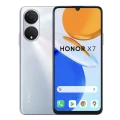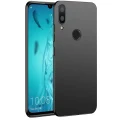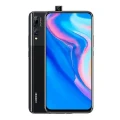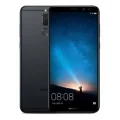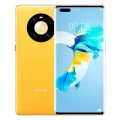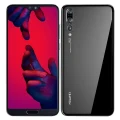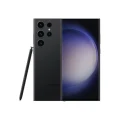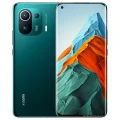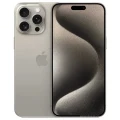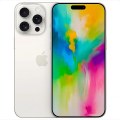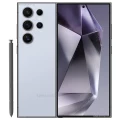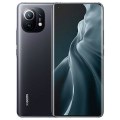- Awesome page
- Latest Mobile
- Smartphones
- Google Pixel 8
Google Pixel 8
Google Pixel 8 Price in Bangladesh
The Google Pixel 8 Price in Bangladesh is BDT 60,000, available in two variants with 128GB or 256GB of storage and 8GB of RAM. This smartphone features a 4575mAh battery with 27W fast charging, ensuring reliable battery life and quick recharges. It runs on Android 14 and is powered by the Google Tensor G3 (4 nm) chipset, offering top-tier performance and advanced features. The Google Pixel 8 Price in Bangladesh reflects its premium build, cutting-edge technology, and seamless user experience.
Specifications
General
| Model | Google Pixel 8 |
| Announced | 2023, October 04 |
| Released | 2023, October 12 |
| Status | Available |
| Unofficial price | 8GB 128GB ৳60,000 |
Design
| Dimensions | 150.5 x 70.8 x 8.9 mm (5.93 x 2.79 x 0.35 in) |
| Weight | 187 g (6.60 oz) |
| Colors |
Obsidian, Hazel, Rose |
Network
| Technology | GSM / CDMA / HSPA / EVDO / LTE / 5G |
| 2G Network |
GSM 850 / 900 / 1800 / 1900 CDMA 800 / 1700 / 1900 |
| 3G Network |
HSDPA 800 / 850 / 900 / 1700(AWS) / 1900 / 2100 CDMA2000 1xEV-DO |
| 4G Network | LTE |
| 5G Network |
SA/NSA/Sub6/mmWave - USA SA/NSA/Sub6 - International |
| GPRS <strong>GPRS</strong> (General Packet Radio Service) is a packet oriented mobile data service on the 2G and 3G cellular communication system's global system for mobile communications (GSM), Generally, GPRS is used for the purpose of wireless data transfer, such as sharing pictures and videos or browsing the Internet via a mobile phone connection. | |
| EDGE <strong>EDGE</strong> (Enhanced Data GSM Environment) is a wireless network technology generally considered the next step in the 2G network offers data transfer rates up to four times faster than ordinary GSM networks, Generally, EDGE is used for the purpose of wireless data transfer, such as sharing pictures and videos or browsing the Internet via a mobile phone connection. | |
| Speed | HSPA, LTE-A (CA), 5G |
Display
| Display Type <strong>Display Technology => </strong> A number of display technologies and types used in mobile phones => TFT (Thin Film Transistor), IPS (In-Place Switching), OLED (Organic Light Emitting Diode), AMOLED (Active-Matrix Organic Light-Emitting Diode), Super AMOLED (an even advanced version of AMOLED), Resistive Touchscreen (Resistive touchscreens contain two layer of conductive material with a very small gap between them which acts as a resistance), Capacitive Touchsceen (Capacitive touchscreen technology consists of a layer of glass coated with a transparent conductor) | OLED capacitive touchscreen, 16M colors |
| Size | 6.2 inches, 91.1 cm2 (~85.5% screen-to-body ratio) |
| Resolution | 1080 x 2400 pixels, 20:9 ratio (~428 ppi density) |
| Features |
Corning Gorilla Glass Victus 120Hz, HDR10+, 1400 nits (HBM), 2000 nits (peak) Always-on display |
Camera
Main camera
| Camera Setup | Dual |
| Primary <strong>Camera</strong> is able to capture photographs and usually videos, The most important characteristics of a camera are the resolution (measured in megapixels), lens focus type (fixed or automatic), higher megapixel cameras are known to capture higher quality photos, but not always a good measurement of the photos quality. |
50 MP, f/1.9, 25mm (wide), 1/1.31&amp;quot;, 1.2µm, multi-directional PDAF, Laser AF, OIS 12 MP, f/2.2, 114˚ (ultrawide), 1/2.9&amp;quot;, 1.25µm |
| Features |
Dual-LED flash, Pixel Shift, Auto-HDR, panorama |
| Video | 4K@30/60fps, 1080p@30/60/120/240fps; gyro-EIS, OIS, 10-bit HDR |
Selfie camera
| Camera Setup | Single |
| Primary <strong>Camera</strong> is able to capture photographs and usually videos, The most important characteristics of a camera are the resolution (measured in megapixels), lens focus type (fixed or automatic), higher megapixel cameras are known to capture higher quality photos, but not always a good measurement of the photos quality. |
10.5 MP, f/2.2, 21mm (ultrawide), 1/3.1&amp;quot;, 1.22µm |
| Features |
Auto-HDR, panorama |
| Video | 4K@30/60fps, 1080p@30/60fps |
Hardware
| Chipset <strong>Chipset</strong> is a group of integrated circuits designed to perform one or a more dedicated functions, often with real time computing constraints, Popular smartphones are equipped with more advanced embedded chipsets that can do many different tasks depending on their programming. | Google Tensor G3 (4 nm) |
| CPU <strong>CPU</strong> (Central Processing Unit) mostly known as processors, CPU processes instructions in order to carry out certain functions that make your device operate properly. Processors are often described as the brain of computers, smartphones and tablets, Smartphones and tablets rely on processors to carry out their every task, Processors are an incredibly important factor in selecting any type of computing device, including your smartphone. | Nine-core (1x3.0 GHz Cortex-X3 & 4x2.45 GHz Cortex-A715 & 4x2.15 GHz Cortex-A510) |
| GPU <strong>GPU</strong> (Graphics Processing Unit) is a single-chip processor designed to rapidly manipulate and alter memory to accelerate the creation of images in a frame buffer intended for output to a display, This includes things such as lighting effects, object transformations, and 3D motion. | Immortalis-G715s MC10 |
| RAM (Memory) <strong>RAM</strong> (Random Access Memory) is a type of computer memory that can be accessed randomly, any byte of memory can be accessed without touching the preceding bytes that allows information to be stored and accessed quickly from random locations. RAM is the most common type of memory found in computer systems, smartphones, tablets and other electronic devices. | 8 GB |
| Internal Storage <strong>Internal Storage</strong> is a data storage space (flash memory) mostly used in smartphones, tablets and other electronic devices where operating system, apps, music, photos, videos, files and other user data Is stored. | 128/256 GB UFS 4.0 |
| Sensors <strong>Sensors</strong> are electronic components that detects and responds to some type of input from the physical environment. The specific input could be light, heat, motion, moisture, pressure and location, The output is generally a signal that is converted to use in computing systems, a location sensor, such as a GPS receiver is able to detect current location of your electronic device. |
Fingerprint (under display, optical), accelerometer, gyro, proximity, compass, barometer |
Connectivity
| Bluetooth <strong>Bluetooth</strong> is a wireless communications technology for exchanging data between mobile phones, headsets, computers and other network devices over short distances without wires, Bluetooth technology was primarily designed to support simple wireless networking of personal consumer devices. | 5.3, A2DP, LE, aptX HD |
| Infrared <strong>Infrared</strong> connectivity is an old wireless technology used to connect two electronic devices. It uses a beam of infrared light to transmit information and so requires direct line of sight and operates only at close range. | |
| USB | USB Type-C 3.2 |
| GPS <strong>GPS</strong> The Global Positioning System is a satellite-based radio navigation system, GPS permits users to determine their position, velocity and the time 24 hours a day, in all weather, anywhere in the world, In order to locate your position, your device or GPS receiver must have a clear view of the sky. | GPS (L1+L5), GLONASS (G1), BDS (B1I+B1c+B2a), GALILEO (E1+E5a), QZSS (L1+L5) |
| NFC <strong>NFC</strong> (Near field communication) is a set of standards for smartphones and similar devices to establish peer-to-peer radio communications with each other by touching them together or bringing them into proximity, usually no more than a few inches. |
Battery
| Battery Type <strong>Battery Type => </strong> Cell phones run on various kinds of batteries depending on the manufacturer, phone size or shape and features. There are basically four types of cell phone batteries => Lithium Polymer, Lithium Ion, Nickel Metal Hydride and Nickel Cadmium. | Non-Removable Li-Po |
| Capacity <strong>Battery Capacity</strong> is a measure (typically in Amp-hr) of the charge stored by the battery, and is determined by the mass of active material contained in the battery. The battery capacity represents the maximum amount of energy that can be extracted from the battery under certain conditions. | 4575mAh Li-Ion |
| Charging Charging | 27W wired, PD3.0, PPS, 50% in 30 min (advertised) 18W wireless Reverse wireless |
Google Pixel 8 Review: A New Era in Smartphone Excellence
Discover the Future with the Google Pixel 8
In the fast-paced world of technology, where new devices are launched every other day, the Google Pixel 8 stands out as a beacon of innovation and excellence. Aimed at tech enthusiasts, smartphone users, and digital nomads, the Pixel 8 promises to deliver an unparalleled user experience. This review dives deep into what makes the Google Pixel 8 a game-changer in the smartphone market. From its sleek design and powerful camera capabilities to its cutting-edge software features, we’ll explore everything you need to know about this latest addition to the Pixel family.
Sleek Design and Premium Build
The Google Pixel 8 boasts a design that is both modern and functional. Crafted from high-quality materials, the phone feels premium in hand. The combination of glass and metal not only enhances its aesthetic appeal but also ensures durability.
Materials, Size, and Weight
The Pixel 8 features a Gorilla Glass Victus front and back, framed by a robust aluminum body. This build ensures that the phone can withstand daily wear and tear while maintaining a sleek, stylish look. Measuring 6.2 inches in height and weighing just 169 grams, the Pixel 8 is comfortable to hold and easy to carry around. Its slim profile makes it pocket-friendly without compromising on screen size or functionality.
Ergonomics and Usability
Google has paid meticulous attention to ergonomics in the Pixel 8. The phone’s rounded edges and smooth finish make it easy to grip. The placement of buttons and ports is intuitive, allowing for seamless one-handed use. Additionally, the Pixel 8 is water and dust resistant, boasting an IP68 rating, which adds an extra layer of durability.
Design Aesthetics
Available in a range of stunning colors, including Just Black, Clearly White, and Sorta Sage, the Pixel 8 caters to diverse tastes. The minimalist design, characterized by clean lines and a subtle Google logo at the back, exudes understated elegance. Whether you’re in a professional setting or a casual environment, the Pixel 8 is sure to turn heads.
Unparalleled Camera Capabilities
The Google Pixel series has always been renowned for its camera performance, and the Pixel 8 is no exception. With advanced photography and videography features, this smartphone is a delight for shutterbugs and videographers alike.
Superior Photography
The Pixel 8 is equipped with a dual-camera setup, featuring a 50MP wide lens and a 12MP ultra-wide lens. These lenses work in harmony to capture stunning images with incredible detail and vibrant colors. Google’s computational photography prowess ensures that every shot is well-exposed and perfectly balanced, even in challenging lighting conditions. The addition of features like Night Sight and Portrait Mode further enhances the photographic experience, allowing users to capture breathtaking images in low light and beautiful portraits with blurred backgrounds.
Videography Performance
Videographers will appreciate the Pixel 8’s ability to shoot 4K videos at 60fps. The incorporation of optical image stabilization (OIS) and electronic image stabilization (EIS) ensures smooth and steady footage, even when shooting on the move. The improved audio recording capabilities, coupled with advanced video editing tools, make the Pixel 8 a comprehensive solution for content creators.
AI-Powered Enhancements
Google’s AI-driven enhancements take the Pixel 8’s camera performance to another level. Features like Super Res Zoom allow users to capture sharp images even at high zoom levels. Additionally, the Real Tone feature ensures that skin tones are represented accurately, celebrating diversity in every shot. These intelligent features make the Pixel 8 a standout choice for photography enthusiasts.
Vibrant Display Quality
The Pixel 8’s display is nothing short of spectacular. With a focus on resolution, brightness, and color accuracy, the screen offers an immersive viewing experience.
High-Resolution Screen
The Pixel 8 sports a 6.2-inch OLED display with a resolution of 2400 x 1080 pixels. This translates to a pixel density of 416 PPI, ensuring sharp and detailed visuals. Whether you’re browsing the web, watching videos, or playing games, the clarity and crispness of the display are evident.
Exceptional Brightness and Color Accuracy
With a peak brightness of 800 nits, the Pixel 8’s display remains easily readable even under direct sunlight. The HDR10+ support ensures that colors are vibrant and true to life, making media consumption a joyous experience. The wide color gamut and excellent contrast ratios further enhance the display quality, providing rich and immersive visuals.
Smooth Scrolling and Responsiveness
The inclusion of a 90Hz refresh rate ensures that scrolling and animations are buttery smooth. This higher refresh rate not only improves the overall responsiveness of the device but also makes interactions more fluid and enjoyable. Whether you’re gaming or simply navigating through the interface, the Pixel 8’s display never fails to impress.
Power-Packed Performance and Long-Lasting Battery
Under the hood, the Google Pixel 8 is a powerhouse. With a focus on performance, battery life, and software features, this smartphone is designed to handle the demands of modern-day usage.
Robust Hardware
The Pixel 8 is powered by the latest Google Tensor processor, coupled with 8GB of RAM. This combination ensures snappy performance, even when running multiple apps simultaneously. The phone comes with storage options of 128GB and 256GB, catering to different user needs. Whether you’re multitasking, gaming, or streaming content, the Pixel 8 handles it all with ease.
Impressive Battery Life
Battery life is a crucial aspect of any smartphone, and the Pixel 8 doesn’t disappoint. With a 4,500mAh battery, the phone easily lasts through a full day of heavy usage. The inclusion of fast charging and wireless charging capabilities ensures that you spend less time tethered to a charger and more time enjoying your device.
Seamless Software Experience
Running on Android 13, the Pixel 8 offers a clean and intuitive user experience. Google’s integration of AI and machine learning enhances the overall functionality of the device. Features like Adaptive Battery and Adaptive Brightness optimize performance based on your usage patterns, ensuring a seamless experience. Regular software updates and security patches keep the device up-to-date and secure.
Comparing the Pixel 8 with Previous Models and Competitors
To truly appreciate the advancements in the Pixel 8, it’s essential to compare it with previous Pixel models and other flagship smartphones on the market.
Evolution from Previous Pixel Models
The Pixel 8 builds on the success of its predecessors, introducing several key improvements. Compared to the Pixel 7, the Pixel 8 offers a more powerful processor, improved camera capabilities, and a higher refresh rate display. The design has also been refined, with a slimmer profile and more premium materials. These enhancements make the Pixel 8 a worthy upgrade for existing Pixel users.
Standing Out Among Flagships
When compared to other flagship smartphones like the iPhone 13 and Samsung Galaxy S21, the Pixel 8 holds its ground remarkably well. While the competition offers robust features, the Pixel 8’s unique selling points, such as its superior AI-driven camera performance and seamless integration with Google services, set it apart. The Pixel 8’s competitive pricing further adds to its appeal, offering excellent value for money.
The Google Ecosystem Advantage
One of the standout features of the Pixel 8 is its seamless integration with the Google ecosystem. Features like Google Assistant, Google Photos, and Google Drive are deeply integrated into the device, enhancing productivity and convenience. This synergy between hardware and software is a significant advantage for users invested in the Google ecosystem.
Weighing the Pros and Cons
Every device has its strengths and weaknesses, and the Pixel 8 is no exception. Here’s a quick rundown of what sets the Pixel 8 apart and where it could improve.
What Sets the Pixel 8 Apart
- AI-Powered Camera: With advanced computational photography and videography features, the Pixel 8’s camera performance is unparalleled.
- Vibrant Display: The high-resolution OLED display with a 90Hz refresh rate offers an immersive visual experience.
- Seamless Software Integration: Running on Android 13, the Pixel 8 offers a clean and intuitive user experience with regular updates.
- Google Ecosystem: Deep integration with Google services enhances productivity and convenience.
Areas for Potential Improvement
- Storage Options: While the Pixel 8 offers 128GB and 256GB storage options, the lack of expandable storage might be a limitation for some users.
- Battery Life: Although the battery life is impressive, heavy users might find themselves needing to recharge by the end of the day.
- Availability: Limited availability in certain regions might make it challenging for some users to get their hands on the Pixel 8.
Summarizing the Pixel 8 Experience
In conclusion, the Google Pixel 8 is a stellar addition to the Pixel lineup, offering a perfect blend of design, performance, and innovative features. Its AI-powered camera capabilities, vibrant display, and seamless software integration make it a top contender in the flagship smartphone market. While there are areas for potential improvement, the overall experience of using the Pixel 8 is exceptional.
For tech enthusiasts, smartphone users, and digital nomads, the Pixel 8 promises to deliver an unmatched user experience, making it a worthy investment. Whether you’re capturing stunning photos, enjoying immersive content, or staying productive on the go, the Pixel 8 has got you covered.
If you’ve had the chance to use the Pixel 8, we’d love to hear your thoughts and experiences. Share your feedback in the comments below and join the conversation with fellow tech enthusiasts.



























































































